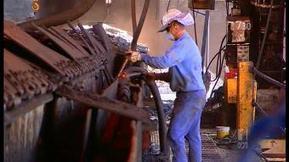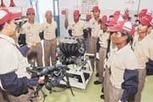Jan 19 2012
Lean In The Digital Office | Articles | Manufacturing.net
Via Scoop.it – lean manufacturing
Lean methodology is not always straightforward to apply in the office. Start by applying it to the digital information and how you access and use it.
Via www.manufacturing.net




Jan 19 2012
Toyota training center in Karnataka, India
Via Scoop.it – lean manufacturing

There is something strange taking place in Bidadi, near Bangalore. Well-dressed young men in some kind of corporate uniform seem to be walking in single file in a marked side-lane that wends its way around a well-groomed, green campus.
Via www.business-standard.com
Share this:
Like this:
By Michel Baudin • Press clippings 0 • Tags: Lean manufacturing, Toyota, Toyota Production System, TPS, Training